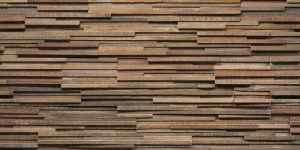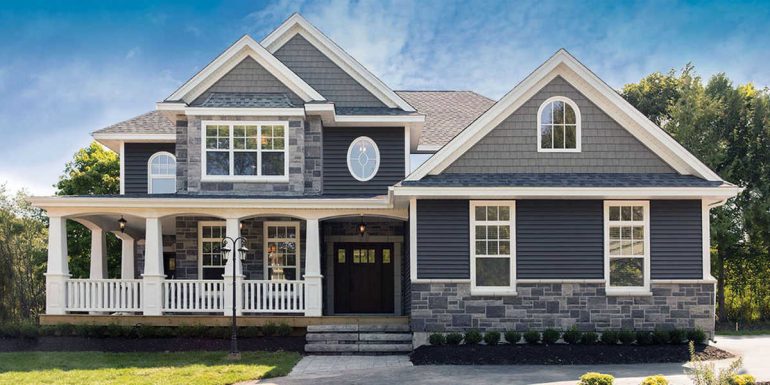Your home’s exterior section can impact how your entire property will look from the outside. However, your exterior walls, roofing, windows, and doors are more than eye candy. As the first point of contact for harmful elements and the harsh weather, these can help keep you and your family safe.
Picking the appropriate materials for our home’s exterior requires a balance of aesthetics and functionality. You can opt for a visually appealing finish; but need to focus on reliability and resilience, among other factors, too.
If you’re planning to revamp your home but don’t know where to start, you’ve come to the right place. Ahead, you’ll find some tips on how to pick the right exterior for your home.
Ask The Experts

The first step in knowing what your home needs are to seek the services of skilled home builders. Before locking in your preferences, discuss with home contractors like Nova Exteriors and other similar companies. So you can know which materials work best for your property and how to pick the right exterior for your home?
With years of experience in installing and renovating the different sections of a home’s exterior, contractors are adept at knowing which materials are ideal for your place, and which ones are least likely to perform as they should.
From your roofing to siding windows and doors; a property renovation company can help you pick the exact materials to keep you safe and make your home look great.
In addition, staging an initial consultation with these companies can provide you with additional guidance on your design plans. Your home’s exterior section can impact how your entire property will look from the outside.
However, your exterior walls, roofing, windows, and doors are more than eye candy. As the first point of contact for harmful elements and the harsh weather, these can help keep you and your family safe.
Picking the appropriate materials for our home’s exterior requires a balance of aesthetics and functionality. You can opt for a visually appealing finish; but need to focus on reliability and resilience, among other factors, too.
If you’re planning to revamp your home, and declutter the living room but don’t know where to start, you’ve come to the right place. Ahead, you’ll find some tips on how to pick the right exterior for your home.
Find Out The Most Common Material Choices And Why

Before preparing to spruce up your exterior space, you must have an idea of the most common materials used for the exterior sections of your home. Here’s a brief rundown to give you an idea on how to pick the right exterior for your home?
1. Siding
- Wood- This material is available in a wide range of styles and finishes. Unfortunately, wood siding is relatively more expensive and more challenging to maintain than the other types. A new wood siding may cost an average of USD$12,500 for every 1,500 square-foot space.
- Metal– Aluminum and steel metal sidings are preferred by property owners who want a low-cost and low-maintenance material, but with a focus on durability.
- Vinyl- It’s the cheapest option among all siding materials. However, it may be prone to warping and is not as weather-resilient as the others.
- Fiber Cement– Made from recycled items, this is the most eco-friendly siding material. It’s often designed to look like wood, with less maintenance, but more costly than vinyl.
2. Roof Materials
- Asphalt Composite Shingles- The top choice among homeowners in the United States, likely for being cost-effective and moderately long-lasting. They’re priced from USD$1 to USD$ 3.50 per square foot.
- Metal Panels– Often used in commercial and agricultural settings, being highly reflective and lightweight. They are up to three times more expensive than asphalt.
- Clay and Concrete Tiles– Ideal for warm climates and are highly long-lasting, they’re more expensive than most options and equally pricey to fix. As they’re heavy, no homes may be able to structurally support them.
- Wooden Shingles– Also relatively costly, and may last up to 50 years, with proper care and under normal conditions. Manufacturers treat the wood to make them resistant to fire, insects, and decay.
- Slate Shingles– The priciest but also the most durable roofing material on the market; capable of lasting more than 100 years. Unfortunately, abnormally strong winds can break them. As such, they shouldn’t be installed in areas prone to hail storms.
- Green Roofs– The most sustainable and eco-friendly roofing option; green roofs feature plants and drainage systems on top of them, keeping the place cool. Having one installed can cost you an average of USD$22,000.
- Synthetic Roofing- These materials are often made from recycled materials, as is the case for rubber shingles. Polymer plastic is another synthetic material choice. These materials can mimic the look of slate and wood roofing. They’re also lightweight and low-maintenance.
3. Exterior Doors
- Wood- The traditional choice because it’s easy to customize and comes in a variety of styles, finishes, and textures. Price-wise, a wooden exterior door is among the costlier choice.
- Fiberglass- It’s often preferred due to its energy efficiency and durability. Additionally, it requires little maintenance and can be made to mimic the look of a wooden door, but is slightly pricier than the latter.
- Aluminum- It’s lighter than steel but possesses higher resistance to rust and corrosion. A low maintenance option, it’s often used as storm doors. An aluminum door is slightly pricier than steel.
- Steel- An exterior steel door is durable and stronger than its aluminum counterpart. Also known to have better insulating properties, and provide better security than wooden doors. Additionally, less costly than wood and fiberglass.
4. Exterior Window Frames
- Wood– The most popular choice because of its versatility and traditional look. Unfortunately, they can warp and rot if not maintained properly.
- Fiberglass- Made from resin and glass fibers, this durable material requires little maintenance. They’re the most expensive option on this list, though.
- Vinyl– Inversely, vinyl is the cheapest window material on the market. It’s also the easiest to install and promote energy efficiency.
- Aluminum- Lightweight, durable, and an aluminum window provides flexibility. It’s a low-maintenance material that’s cheaper than wooden windows.
Find Out The Key Factors To Consider

When planning to remodel your home, many things may cross your mind. For instance, you may wish to have a futuristic home with an unconventional design. Or, you want the opposite and stick to a traditional one to avoid the frills.
Design preference aside, consider the following elements when choosing the proper material for your home’s exterior:
Your Property’s Location

Perhaps, the key in choosing proper material for your project is your property location. While relatively capable of fighting off the harsh weather and other elements, not all materials react the same to these stressors. For instance, metal roofing like aluminum should be avoided when your property is along the shore.
Apart from being highly prone to corrosion, aluminum, which may be the lightest roofing material, can easily be blown away by strong winds that often batter the shorelines. Conversely, if you live in an area where it’s always hot and humid, consider having clay tiles, as they can withstand high heat.
So, before picking the material, ask an expert whether the environmental conditions in your locality permit its use. Failure to do so may cost you, both literally and figuratively.
Maintenance Costs And Works Required
As a home owner you may need to perform minor tasks while to ensure that your exterior is working as it should. This may include checking your gutter for blockages and clearing them, or inspecting external walls or siding for warping and internal rot. These activities should be done regularly and on top of the yearly home inspections contractor must perform.
Ask yourself how much time, effort, and costs you’re willing to pour in just to keep your exterior in tip top shape. Some materials may be more aesthetically pleasing than others, but they can be more sensitive to water, heat, and other elements, than the others. The same principle applies in choosing your roof’s soffit and fascia materials.
Durability And Life span
Your home exterior is your first line of defense; hence, it’s only fitting to choose a material that can withstand the requirements of your geographical location. Additionally, your preferred material must be durable, to start with.
Case in point? Slate shingles, which are also called ‘forever roofs’ because they could last for 100 years. This roofing material is also an eco-friendly alternative to other traditional types. But, they’re also the most expensive among the lot, so you may want to reconsider.
Another thing to consider is the quality of the product and the manufacturer’s reputation. As every homeowner may already know, there are numerous companies that create vinyl siding. A trip to the construction and hardware store will reveal this type of siding in all shapes, sizes, and colors. A quick check from both online sources and actual users can tell provide you an idea on how reliable a product is.
Value-For-Money
When choosing the right material, you don’t have to go and jump at the cheapest one right away. In most cases, you’ll get what you pay for, so be very careful in taking this route. Conversely, this doesn’t necessarily mean that you have to opt for the priciest choice, either.
With the help of a professional, and some research you should take home decoration training. So you’ll be able to find non-traditional materials that could work as well as their more expensive counterparts. Simply put, when it comes to picking the right material, price isn’t everything. More importantly, knowing how to maximize your budget and resources, is the key.
Final Thoughts
Picking the right material for your home exterior requires careful planning and research, especially with too many choices available on the market. Set your priorities and must-haves, and take your time in searching for the most viable option.
Apart from coming up with key traits as listed above, consider how much you’re willing to spend on your project. And don’t forget to check how the above mentioned material can affect the look you’re aiming for.
With the right tools and resources, you’ll be able to choose the most ideal material for your property—ultimately improving the security, look, and value of your home.




